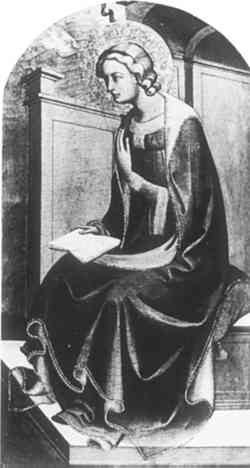THREE METHODS OF MODELLING THE VIRGIN'S MANTLE IN EARLY ITALIAN PAINTINGNorman E. Muller
2 MODELLING IN THREE VALUESAmerican conservators are undoubtedly most acquainted with the technique of modelling up to the highlights with three values of blue as described by Cennino in Chapter CXLV of his treatise.2 Pure blue, generally ultramarine but occasionally azurite, was laid in for the shadows over the underdrawing on the gesso. A lighter value of blue, having lead white as its major component, was juxtaposed next to the pure blue and carefully shaded into it so that no sharp division would be perceived by the viewer. Finally, white or pale blue was applied for the highlights.3 Artists varied in their handling of this method. Some, such as Giotto and Pietro Lorenzetti, for example,4 made a special effort to carefully blend the three values of blue; whereas others, such as the close follower of Lorenzo Monaco who painted the Virgin Annunciate in the Norton Simon Museum of Art as shown in Figure 1, 5 were less painstaking in their treatment. Although this particular technique of modelling was practiced by most Italian artists, it was no more frequently used than the next one to be considered.
|
